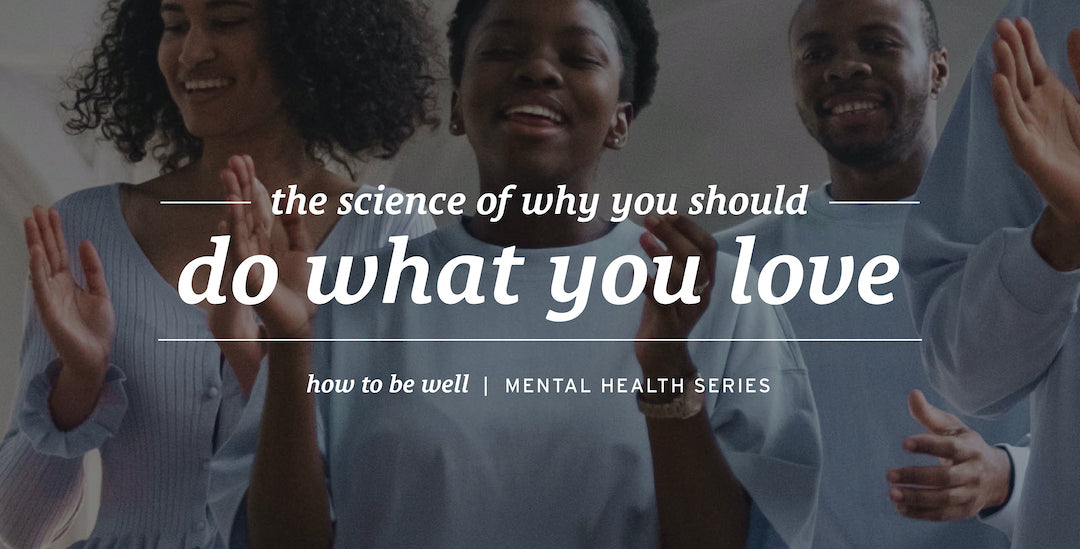How to be well: Do what you love
New research finds that our brains reward us with anandamide for more activities than just exercise.

You’re probably familiar with runner’s high—that post-exercise euphoria where you feel like you can do anything.
This well-reported phenomenon is attributed to our evolution; positive reinforcement led to increased food foraging and survival. And even today, we feel this positive reinforcement partly due to a very important endocannabinoid, anandamide—also known as the bliss molecule.
While we know that anandamide is released with strenuous exercise, and for the first time, a recent study points to other activities that may cause this natural, mood-enhancing reward in our bodies.
Before we get into the findings, let’s talk endocannabinoids.
If you’re familiar with CBD, you’ve likely heard of the endocannabinoid system (ECS). This vital receptor network is located throughout our central nervous systems, organs, and even our immune cells. Basically, the ECS keeps a number of physiological functions working the way they are supposed to.
A key part of proper ECS function is endocannabinoids, like anandamide. When these chemical messengers bind with our CB1 and CB2 receptor sites, our body balances into homeostasis (which can be observed as calm and clarity, soothed feelings of tension and discomfort, and all kinds of powerful benefits).*
According to Ph.D. scientist Bradley E Alger:
“With its complex actions in our immune system, nervous system, and virtually all of the body’s organs, the endocannabinoids are literally a bridge between body and mind.”
All this to say, it’s crucial to our mental and physical well-being to keep our endocannabinoid levels on track. Considering how important endocannabinoids are to health, a group of scientists thought—what if there are other activities, aside from running, that can naturally boost our endocannabinoid levels?
The study:
Nine healthy members of a local choir group were put through rounds of different activities: cycling, reading, and singing. After completing each round, the plasma levels of endocannabinoids were recorded from each volunteer.
Reading served as the control, with little to no effect on endocannabinoid levels.
With cycling—levels increased—as expected. Yet interestingly, when the group was asked to perform their “preferred exercise” rather than an assigned one, they experienced the highest effectiveness in reducing feelings of anxiety and mood elevation.
And for the final activity: singing. These findings became the most prominent piece of the study, as the choir members’ anandamide levels skyrocketed—suggesting that singing produced an “indigenous high” for the participants.
Of course, a crucial factor here is that these participants were already active singers in a local choir. Knowing this (and the results of “preferred exercise” over an assigned one), it can be concluded that anandamide levels are not only responsible for the motivation for exercise—but also the pleasure associated with an activity that an individual truly enjoys.
Overall, anaerobic activities, like singing, could be a valuable asset in patient populations who suffer from dysfunctions in psychological well-being, and struggle to participate in high-intensity exercise.
And even more so—this preliminary evidence indicates that an individual’s preference for a particular activity plays a large role in endocannabinoid levels, and in turn, how much reward we get from a particular activity.
The takeaway: do what you love, and your body will reward you for it.
While follow-up studies are recommended to get the full story on anandamide, this preliminary research on singing remains an exciting first look at what it means—on a molecular level—to do what we love.
Keep this in mind the next time you get the urge to have a dance party in your living room. If it gives you the optimistic “high” your body was craving—consider dancing it out more often.
And when you get your daily movement in, whatever it may be, make sure it’s something you actually enjoy. Life’s too short to punish yourself with exercise that doesn’t serve your body (or soul) to the fullest.
When you find that thing that makes you truly feel alive, stick with it. Your body and mind with thank you in more ways than one.*
And it’s okay if you don’t have it all figured out yet. While you’re trying out new activities and searching for your “thing,” consider a cannabinoid supplement to make sure your ECS function stays on track. Our full spectrum anytime gummies are bound the bring a smile to your face—all while keeping your well-being in check—whenever you need it.
Sources:












